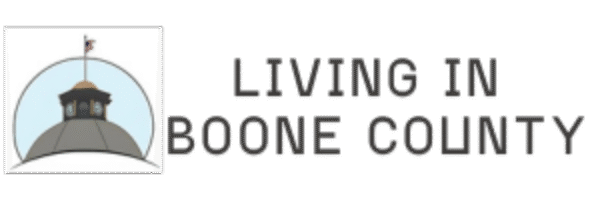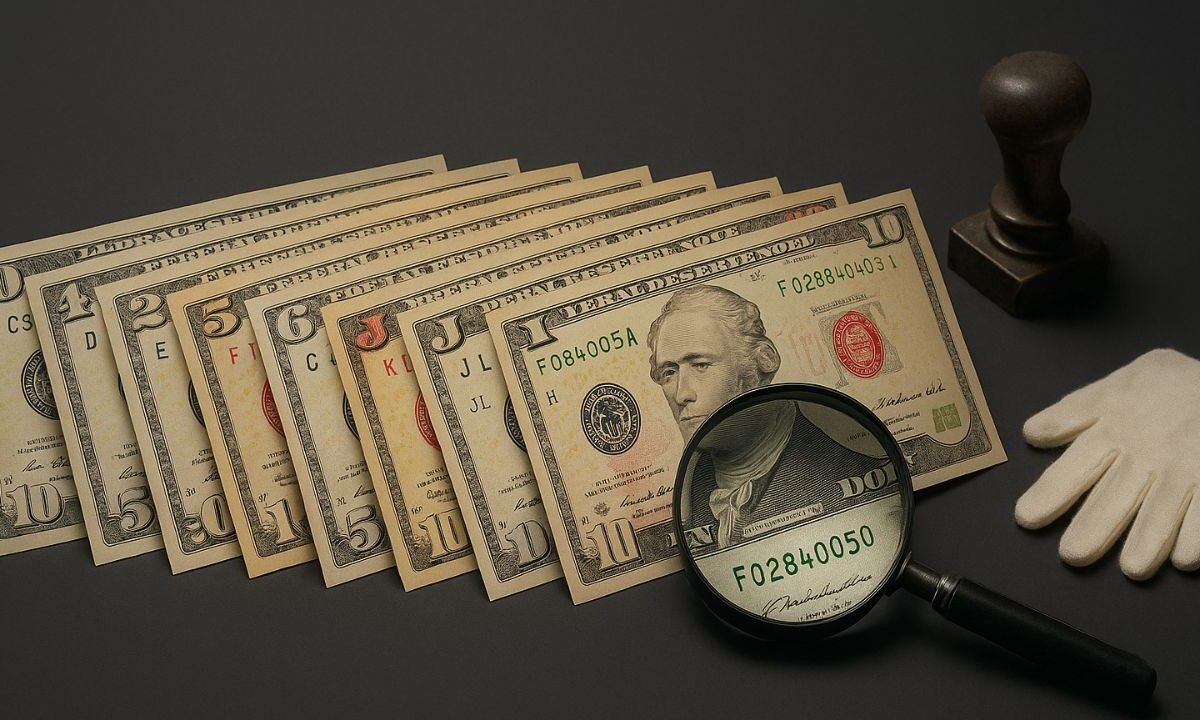Every modern Federal Reserve Note (FRN) is tied to one of 12 Federal Reserve Districts (A–L).
On small-size notes (Series 1928 forward), the district letter appears in the Federal Reserve seal and commonly in the serial-number prefix.
Because each district ordered different quantities across series and denominations, district scarcity is a real driver of value—especially for certain blocks and star-note replacements.
Seal Colors And Note Types
While standard FRNs carry a green Treasury seal, collectors also track small-size notes with other seal colors from parallel note families of the era:
- Blue seals (Silver Certificates)
- Red seals (United States Notes / Legal Tender)
- Brown seals (1929 Federal Reserve Bank Notes, or FRBNs)
Seal color quickly tells you the note family, and on many issues the district still influences availability and price.
Signatures, Series And Why They’re Scarce
Each series pairs a Treasurer of the United States signature with that of the Secretary of the Treasury.
Some signature pairs appear for only a short time, creating scarce combinations.
Add in short print runs, star replacements, or a change in plate/serial blocks, and you get pockets of genuine rarity—particularly in high grades where original paper quality and centering are exceptional.
The Brown-Seal 1929 FRBN Issue
The 1929 FRBN series is a favorite among specialists. These notes use brown seals and serials and are issued by individual Federal Reserve Banks (not the system as a whole).
Many district/denomination pairings saw modest printings, and some higher denominations are tough to locate, especially uncirculated.
District chasing within this set is both challenging and rewarding.
Modern Favorite: The 1976 $2 FRN By District
The Series 1976 $2 FRN re-launched the deuce with a green seal and a full sweep of districts. Building a 12-district set is a classic starter project.
While most notes are common in circulated condition, top-grade examples and star notes can command strong premiums—particularly for districts with smaller deliveries in select blocks.
Quick Reference – Scarce District Highlights
(Examples for study and checklist planning; specific availability varies by grade, block, and star status.)
| Series / Type | Denomination | District Focus | Distinctive Features | Scarcity Drivers |
|---|---|---|---|---|
| 1929 FRBN (Brown Seal) | $10–$100 | Multiple | Brown seal/serials; bank-named issues | Many districts had limited outputs, tougher in higher denominations |
| Small-Size FRN (Green Seal) | $5–$100 | A–L | District letter in seal & serial prefix | Short runs, star notes, and certain signature pairs |
| 1976 $2 FRN | $2 | All 12 | Bicentennial-era return of the deuce | Star notes and top grades often scarce by district/block |
| Small-Size Legal Tender (Red) | $2, $5 | System-wide | Red seal; iconic type companion | Some series/blocks tougher in Gem |
| Small-Size Silver Certificates (Blue) | $1, $5 | System-wide | Blue seal; parallel circulation | Select blocks and stars show premium scarcity |
How To Spot Value Quickly
- Check The District: Use the seal letter and serial prefix (A=Boston … L=San Francisco). Certain districts can be tougher for specific series/denominations.
- Confirm The Type: Green seal = FRN; brown = 1929 FRBN; red/blue indicate other small-size families with their own rarity rules.
- Scan For Stars: A star (★) at the end of the serial denotes a replacement note, often printed in smaller ranges.
- Grade Rules: Crisp paper, sharp corners, and centered margins push prices. Gem-uncirculated survivors are exponentially scarcer.
- Block & Plate Nuance: Specific letter blocks and plate positions can separate common notes from sleeper varieties.
Collecting Strategy By Budget
- Entry Level: Build a 12-district $2 (1976) set; add a few star notes.
- Intermediate: Assemble a district run in one denomination (e.g., $10 FRNs) across a couple of series; target choice AU/UNC.
- Advanced: Tackle 1929 FRBNs by district and denomination; pursue high-grade and star combinations when possible.
District letters, seal colors, signature pairs, and star-note status are the core ingredients that turn an ordinary bill into a scarce, high-demand collectible.
Whether you’re building a display-ready 1976 $2 district set or hunting brown-seal 1929 FRBN sleepers, focusing on print characteristics and condition will help you spot value, avoid overpaying, and assemble a collection that stands out.
FAQs
How Do I Know Which District Issued My Note?
Look at the Federal Reserve seal letter (A–L) and the first letter of the serial number. Together they identify the district.
Are Star Notes Always Valuable?
Star notes replace misprinted sheets and usually have smaller runs. Many are worth a premium—especially in uncirculated and from tough districts/blocks.
Which Series Should Beginners Start With?
The 1976 $2 FRN is ideal: all 12 districts are available, and you can add star notes or pursue high-grade examples as your budget grows.

